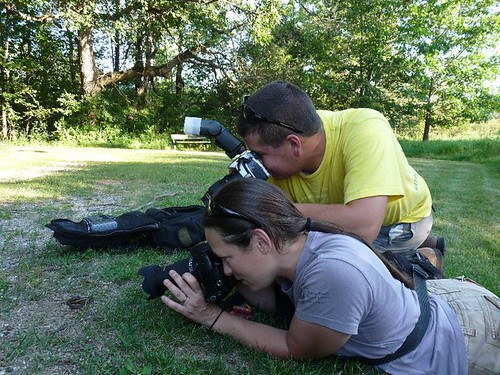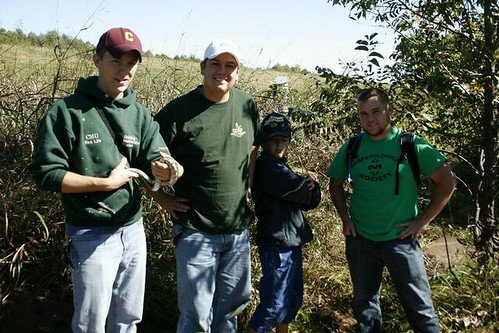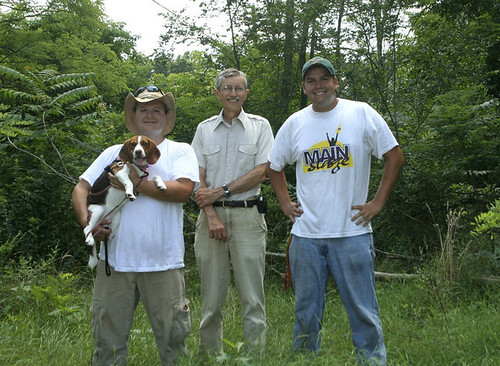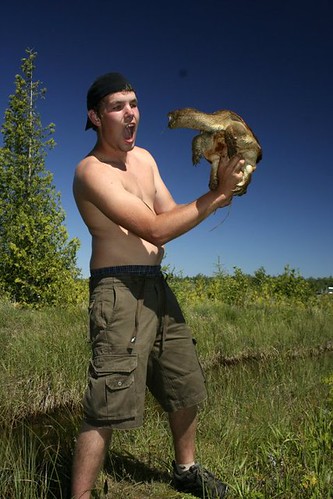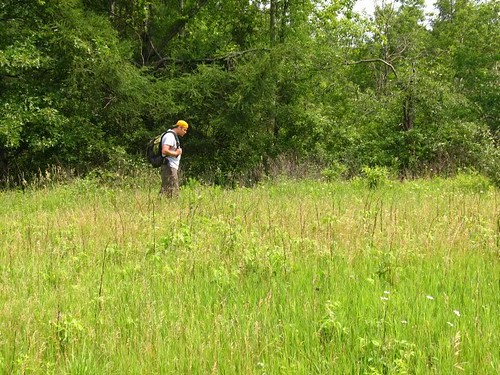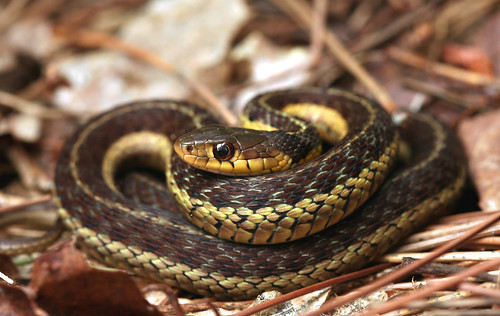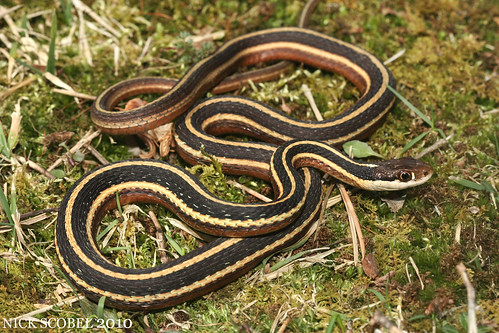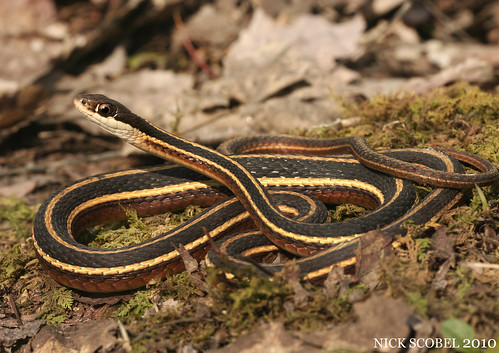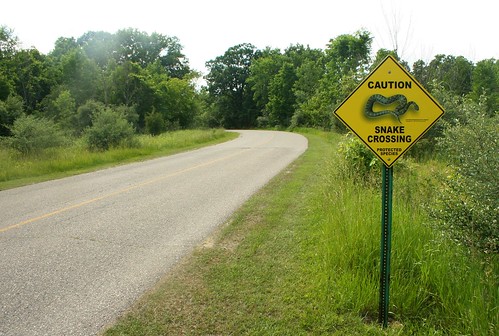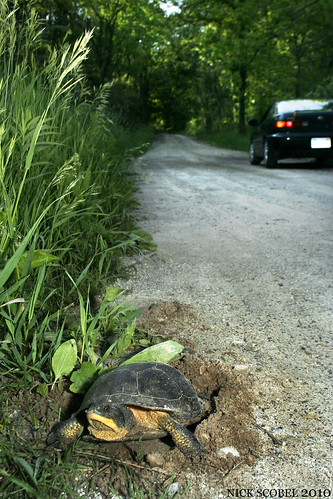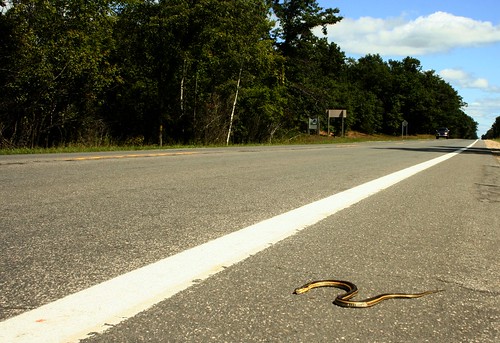Many of the more glamorous or rare species of reptiles and amphibians often get the most attention throughout the herpetofaunal community. Often, some of the more extremely common species are overlooked and discarded as "trash" snakes that are as common as dirt. In Michigan, there is no group of herps that is more over looked than the genus
Thamnophis, the Garter Snakes. The Wolverine state is home to three species of Garter Snake which include the Eatern Garter, Butler's Garter, and the Northern Ribbon. I'll begin with the less known of the three, the Butler's Garter Snake.
Butler's Garter Snake - Thamnophis butleri
This small snake species is less common than its other two counterparts in Michigan. It inhabits meadows, grasslands, marshlands, and vacant lots in the eastern half of the lower peninsula. Though it has a spotty distribution, they can be found in huge number at sites where populations exist. Butler's Garter Snakes are easily confused with Eastern Garter Snakes to the untrained eye, but there's a few practical ways to distinguish between the two species in the field. Butler's are usually smaller in general than Easterns, and they have a much smaller head in comparison to their body. A good field mark for a Butler's Garter Snake is a small, dark, bullet-shaped head which has little distinction from the neck. This species consumes mostly earthworms in the field, but it will also take slugs and small amphibians.
Eastern Garter Snake - Thamnophis sirtalis sirtalis
This is the "Gardener" snake that most Michigan residents are most accustomed to. It can be found in almost any habitat in Michigan including woodlands, grasslands, marshes, fens, city lots, and backyards. It is a medium sized snake that is usually characterized as a dark-ish snake with three bright stripes running down its body. This snake is highly variable in cover, some individuals can be black, brown, olive with yellow, white, or even orange-ish red striped. Some individuals may even be completely black, this is known as melanism. It is usually much larger than the Butler's Garter Snake and its head it usually larger than the body in comparison to the Butler's. Eastern Garter Snakes are not picky eaters as they are known to feed on earthworms, slugs, frogs, toads, rodents, and occasionally other snakes.
Northern Ribbon Snake - Thamnophis sauritus septentrionalis
This attractive species is the third and final species on the list. Unlike its other two cousins, the Northern Ribbon Snake is a long, thing snake with a whip-like tail. It is easily distinguished by its white cheeks, large eyes, and white spot right in front of each eye. This species is much more of a wetland species and is often found near fens, river, ponds, and other marsh-like habitats. It is an amphibian lover, and one of its favorite species is the Spring Peeper and other small Anurans. These three snakes may be common, but they all serve vital places in Michigan ecosystems and are an important part of Michigan's flora and fauna.



